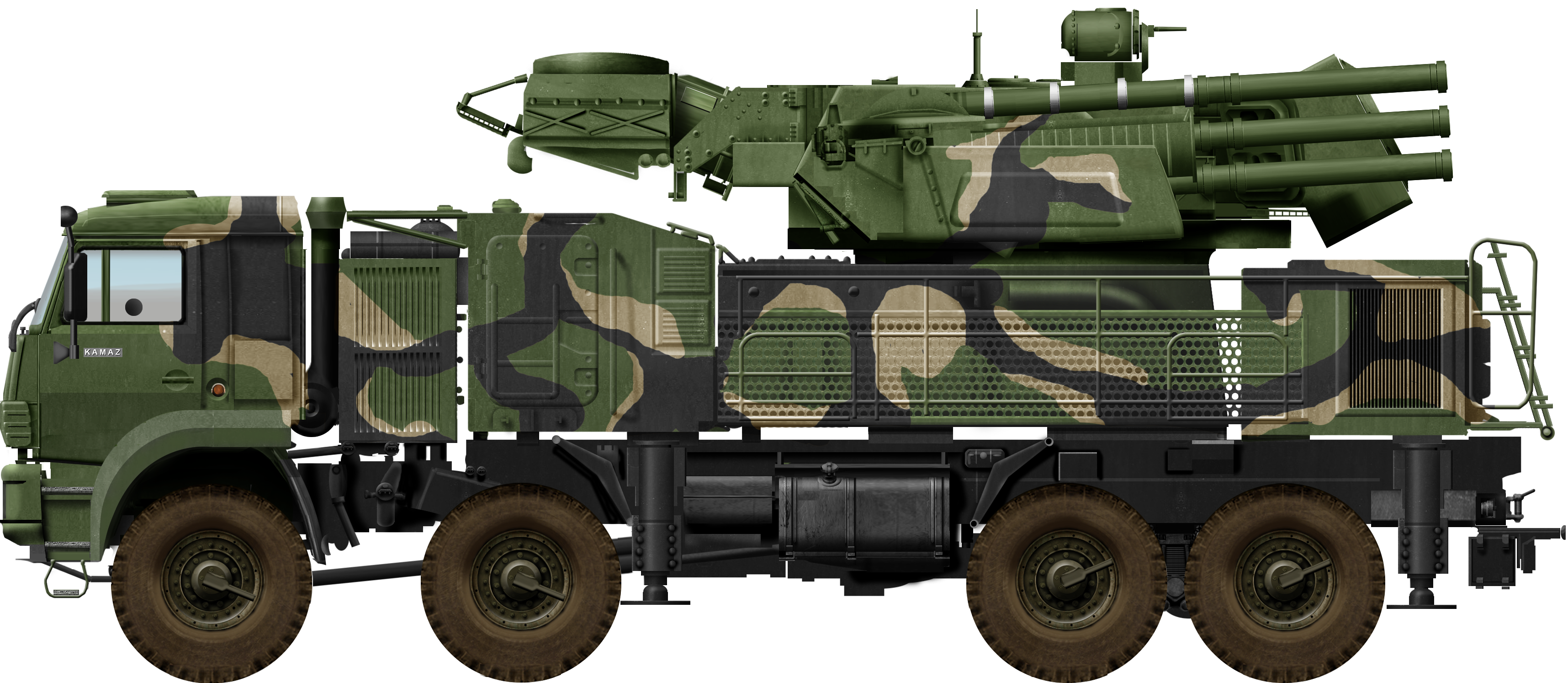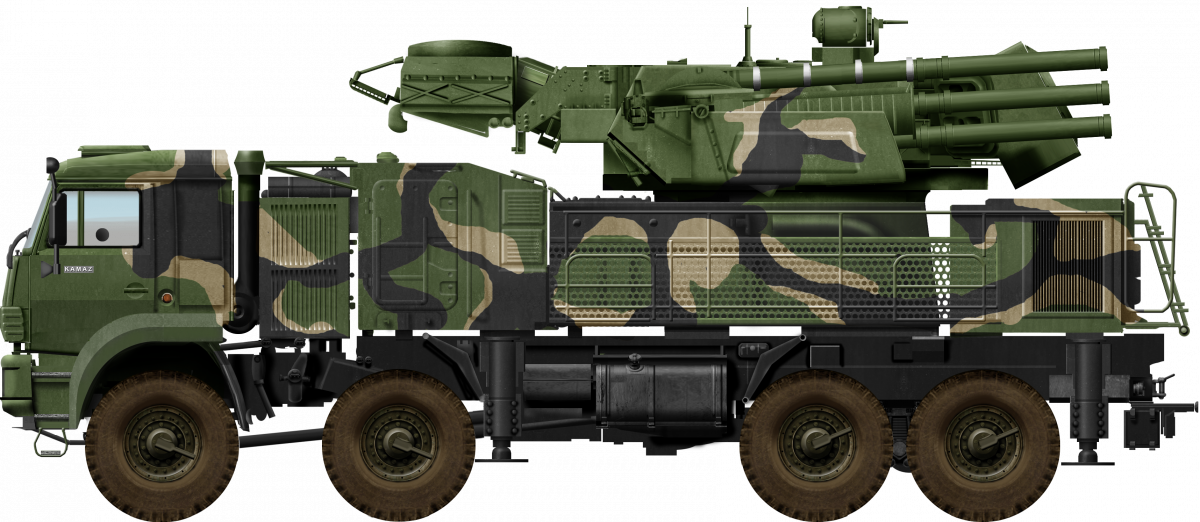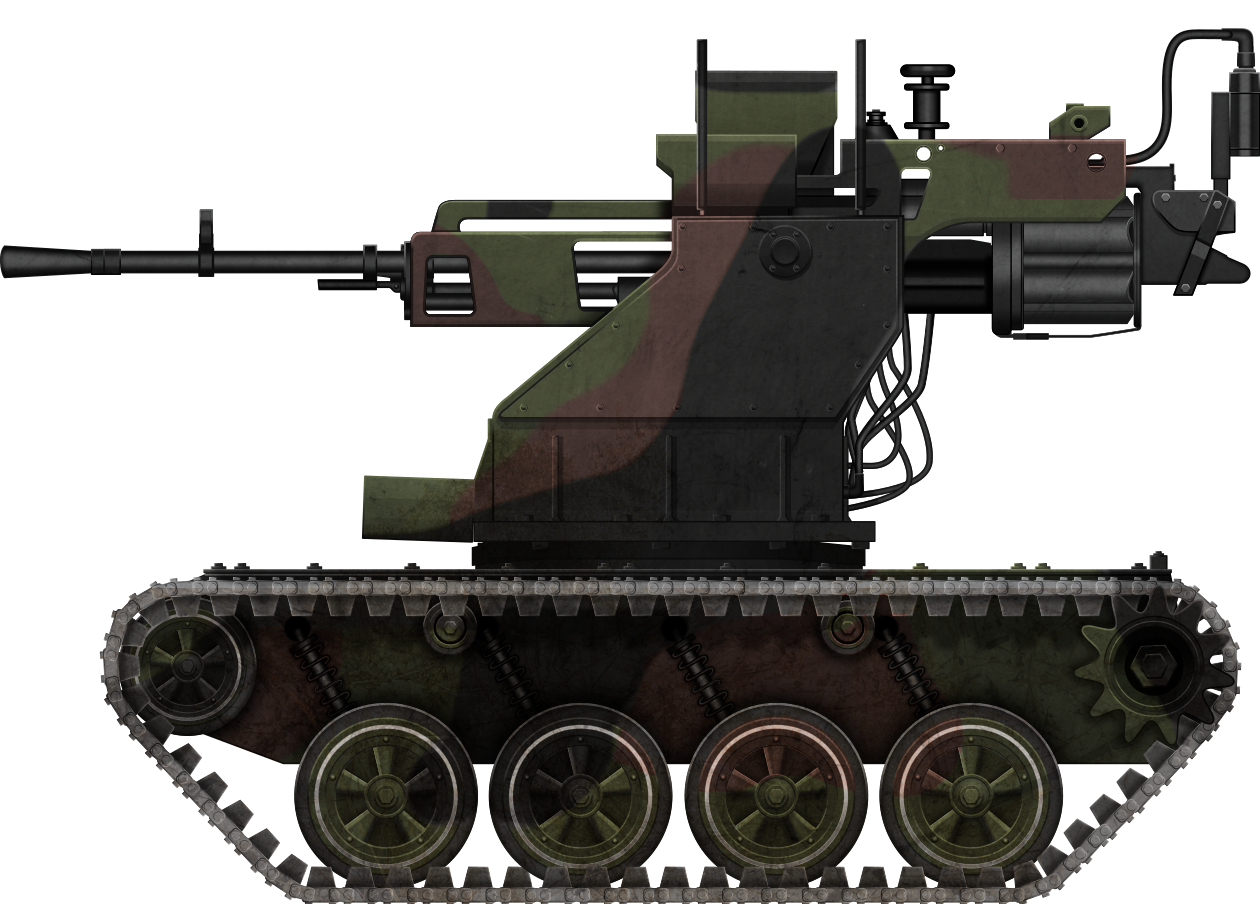 Republic of Serbia (2020)
Republic of Serbia (2020)
Self-Propelled Anti-Aircraft Vehicle – 6 Purchased
In 2019, Serbia made a deal with Russia, acquiring six Pantsir S1 self propelled anti-aircraft systems, significantly boosting Serbia’s anti-aircraft defense capabilities. The Pantsir S1 was designed as a versatile complex intended to engage multiple targets at once using two 30 mm cannons and guided missiles. The Serbian vehicles were allocated to the 250th Raketna Brigada (Eng. Rocket Brigade). There are talks regarding the acquisition of an improved version of this vehicle, but nothing concrete has emerged as of October 2023.

A Brief History Of Serbian Anti-Aircraft Defense
The outbreak of the First World War marked the beginning of the creation of Serbian anti-aircraft defense. In July 1914, Austria-Hungary declared war on Serbia, just a month after the assassination of Archduke Franz Ferdinand. The same day, Austria-Hungary began bombarding the Serbian capital, Belgrade, followed by a large invasion. During these events, Austria-Hungary employed a small air force primarily for reconnaissance purposes. These aircraft occasionally carried out bombing raids as well.
At that time, the Serbian military had limited resources and capabilities to counter aerial threats. During the war, Serbia and all other nations involved in the war faced significant challenges in defending against enemy aircraft. The Serbian Army lacked dedicated anti-aircraft units and specialized equipment. However, they made efforts to adapt and respond to the new threat posed by aerial warfare. They repurposed 75 mm Schneider M-1907 field guns by mounting them on improvised platforms to enhance their elevation. Although there is limited documentation regarding the performance of these improvised Serbian anti-aircraft guns in the first year of the war, it is believed that they managed to shoot down or severely damage at least one or two enemy aircraft.
In the following year, the Serbian government made more dedicated efforts to establish an organized anti-aircraft defense system. Allied France, which was supporting Serbia, dispatched a group of aircraft and pilots to assist them. With the assistance of these French pilots, initial attempts were made to develop improved anti-aircraft guns.
To achieve this, a few 75 mm Krupp guns (which had been captured from the Ottomans during the First Balkan War in 1912) were modified specifically for anti-aircraft purposes. The modifications did not involve significant changes to the gun itself. Instead, a special platform was designed to enable the gun to have a full firing arc and increased elevation. In May 1915, two of these modified guns were sent to Belgrade, marking the formation of the first anti-aircraft unit in Serbian history. Additional guns of this type were subsequently deployed to enhance the anti-aircraft defense of the capital and other strategically important locations in Serbia.

On the 30th of September 1915, a group of 7 enemy aircraft were flying toward the city of Kragujevac, dropping some 45 bombs in the process. The Serbians responded with anti-aircraft fire but initially failed to score any hit. From a firing point at Metino Brdo, gunner Radoje Raka Ljutovac was trying to hit one enemy flier. Through his sight, he managed to acquire the enemy aircraft and fired, scoring a direct hit. The enemy aircraft was shot down, killing the two crew members in the process. The incident described is considered one of the early instances, if not the first, of shooting down an aircraft using ground-based anti-aircraft fire. For this remarkable feat, Ljutovac was honored with the Karađorđeva Zvezda (Eng. Order of Karađorđe’s Star), one of the highest military awards in the Serbian Army. Following the war, 30th September was celebrated as the Day of Anti-Aircraft Defense, commemorating Ljutovac’s achievement.
In the following decades, the now Kingdom of Yugoslavia Army continued improving its anti-aircraft defense. Improved anti-aircraft guns were acquired, mostly from Czechoslovakia. During the Axis invasion of Yugoslavia in April 1941, these offered strong resistance. The number of enemy aircraft shot down by the Yugoslav anti-aircraft defenses during the invasion is difficult to ascertain with accuracy, as historical records and sources differ. However, it is believed that the Yugoslav anti-aircraft defenses did manage to shoot down at least 45 enemy aircraft. The Yugoslav armed forces faced overwhelming odds during the invasion, as the Axis had superior firepower, air support, and coordination. Despite valiant but ill-coordinated efforts, the Kingdom of Yugoslavia was quickly occupied by Axis powers and subsequently disintegrated.
During the process of rebuilding and rearming the Jugoslovenska Narodna Armija (JNA, Yugoslav People’s Army) after the Second World War, the JNA faced challenges due to the destruction of industrial infrastructure. In order to acquire new equipment, the JNA initially relied on the Soviet Union as its main supplier. However, the relationship between Yugoslavia and the Soviet Union deteriorated during the Tito-Stalin split, which began in 1948.
As a result of the split, the JNA turned to Western countries for military equipment. In 1951, Yugoslavia signed the Mutual Defense Aid Program (MDAP) with the United States. Through this program, the JNA received substantial assistance and acquired various types of military equipment between 1951 and 1958.
Among the equipment received were a small number of M15 anti-aircraft half-tracks. Additionally, due to the scarcity of equipment, the JNA improvised by mounting captured German anti-aircraft guns, predominantly 20 mm ones, on available trucks. By repurposing existing trucks and integrating captured weaponry, the JNA created their own makeshift anti-aircraft vehicles. This mix of acquisitions from abroad and domestically improvised solutions helped the JNA in the process of rebuilding and strengthening its military capabilities in the post-World War II era.

After Stalin’s death in 1953, the political tensions between the Soviet Union and Yugoslavia began to relax to some extent. This led to the possibility of Yugoslavia purchasing new military equipment from the Eastern Bloc, which included various anti-aircraft weapons. The JNA took advantage of this opportunity to bolster its defense capabilities and acquired a range of anti-aircraft weapons of different calibers. They were intended to protect Yugoslavia from potential aerial threats coming from both the Western and Eastern Blocs. However, tragically, many of these weapons acquired by the JNA were eventually used during the disintegration of the country during the 1990s Yugoslav wars. As the country descended into conflict and different ethnic groups sought to assert their independence, the weapons that were initially meant for defense were deployed against the very people they were initially meant to protect.

On 27th April 1992, Serbia and Montenegro formed the Savezna Republika Jugoslavija, SRJ (Federal Republic of Yugoslavia). Its newly created Army inherited what was left of the former JNA weapons and equipment. In 1998, tensions between Serbian authorities and Albanian paramilitary organizations operating in the province of Kosovo and Metohija led to a NATO intervention aimed at ending the conflict and protecting the Albanian population. The NATO air bombing campaign against the SRJ lasted from 24th March to 10th June 1999. While the Yugoslav Army faced superior numbers and the technological dominance of NATO forces, the conflict primarily consisted of air strikes, and no ground invasion was launched.
On 27th March 1999, during the NATO air bombing, the Yugoslavian 250th Rocket Brigade achieved a historic feat, shooting down an American F-117 Nighthawk stealth bomber. The F-117 was a highly advanced aircraft known for its stealth capabilities, and this incident marked the first and only known shootdown of such an aircraft in history.
The 250th Rocket Brigade, equipped with Neva-guided rockets, was responsible for the successful downing of the F-117. Despite operating with aging and obsolete equipment, the Yugoslav anti-air defense managed to exploit a vulnerability in the stealth technology of the F-117 and successfully engaged the aircraft. The details of the specific circumstances and tactics used in this shootdown remain a subject of debate and speculation.
The shootdown sent shockwaves through the international community and showcased the effectiveness of the Yugoslav Army’s anti-aircraft capabilities, despite being severely depleted by shortages and lack of funds. It also highlighted the challenges faced by NATO forces in maintaining complete air supremacy during the conflict. The remains of the F-117 can be seen at the Belgrade Military and Aviation Museums.


The Serbian military underwent a major reorganization process after the final dissolution of Yugoslavia in 2006. The Serbian Army reduced its manpower and phased out obsolete equipment. Its primary anti-aircraft force consisted of the best available vehicles, such as the 2K12, SLO S-10M, and the Strela 1M. In recent years, the Serbian military industry managed to put into production a series of new vehicles, including some modern anti-aircraft designs. This includes the PASARS-16, which is armed with the Bofors 40 mm anti-aircraft gun along with two short-range anti-aircraft rockets. These were further reinforced with a battery of Pantsir S1 acquired in 2020 from Russia.



Russian Pantsir S1
During the 1990s, the Soviet and later Russian Army began developing a new self-propelled anti-aircraft system intended as a cheaper variant of the 2K22 Tunguska. After years spent in development, the Pantsir S1 was introduced within the Russian Army in early 2010.
The main purpose of the Pantsir S1 is to engage and destroy various aerial targets, including helicopters, aircraft, missiles, and drones. Its armament consists of two pairs of 30 mm 2A38M cannons and up to 12 missiles. The missiles used by the Pantsir S1 have a maximum effective range of 20 km. The 30 mm cannons can be used to engage both ground and aerial targets, with a maximum firing range of 4 km against ground targets and 3 km against air targets.
The Pantsir S1 system can be mounted on different 8×8 heavy truck chassis, including vehicles like the KAMAZ-6560. This flexibility in chassis selection helps reduce construction costs and allows for easier transportation and deployment of the system.
The Pantsir S1 has been exported to various countries, including Algeria, Jordan, Libya, Syria, and others. It has been used in conflicts such as the Libyan Civil War, the Syrian Civil War, and the invasion of Ukraine, where it has been deployed to provide air defense capabilities against enemy threats.

Pantsir S1 in Serbia
Russia and Serbia have a long history of cultural, religious, and political ties. The Slavic and Orthodox Christian backgrounds of both nations have contributed to a sense of shared identity and affinity. Throughout history, Russia has provided assistance to Serbia on various occasions, viewing it as a potential ally and a strategic foothold in the Balkans.
Serbia, being geographically located in a region often surrounded by larger powers, has sought alliances with stronger nations to ensure its survival and protect its interests. Russia has been one of the countries that Serbia has relied upon for support and solidarity.
The historical relationship between Russia and Serbia has not always been smooth. The split between Tito and Stalin, which occurred during the Cold War, strained the ties between the two countries. However, in recent years, Serbia has heavily depended on Russia’s support in the United Nations regarding the issue of Kosovo. This political partnership is also reflected in military cooperation, as Serbia’s military equipment is predominantly based on Soviet-era technology. Transitioning to Western equipment would be expensive and pose logistical challenges, hence Serbia continues to make purchases from Russia.
It is worth noting that Serbia does engage in arms purchases from other manufacturers apart from Russia. However, the reliance on Russian support and equipment is a significant aspect of their defense cooperation.
The Pantsir S1 and S-400 were first showcased in Serbia during the Russian-Serbian military exercise Slovenski Štit (Eng. Slavic shield) in October 2019. The exercise took place near Belgrade at Batajnica, and both systems were demonstrated to the public. There were discussions and interest from Serbian politicians regarding the potential purchase of the S-400 system. However, no official agreement or contract has been signed, which should not come as a surprise, given the lack of funds for such a system.


At the time when these two systems were presented to the public, the Serbian political hierarchy was willing to put huge funds into the acquisition of modern weapons and equipment. According to various media sources, during that time, total spending for acquisitions was over $1,300 million. The reasons for this mass expansion were mainly political in nature and, to some extent, the desire to improve the ability to defend the unaligned country from potential threats.
The increase in the military budget provided sufficient funds for the acquisition of six Pantsir S1 vehicles. The deal was officially signed in 2019. According to the agreement between the Serbian and Russian sides, these were meant to arrive in 2020. On 23rd February 2020, a large Russian An-124 cargo plane landed at the airbase in Batajnica. This landing was met with great media and public attention. Later that day, the Serbian Minister of Defence confirmed the arrival of the first Pantsir S1, stating to the press “..By acquiring defensive weapons, the only one of its kind in the region, Serbia continues to strengthen its defense power and increase its deterrent potential..” The last two vehicles arrived in March 2020. The prices at which these vehicles were obtained has not been disclosed at present. Costs associated with one single vehicle are reported to reach over $13 million.

In Service
Once in Serbia, these vehicles were given to the 250th Rocket Brigade. The crews for these vehicles received the first basic training and familiarization in 2019, when the Russian vehicles were in Serbia. On 9th April 2021, an accident took place involving one of the vehicles. During transportation to a military exercise near Belgrade, for unspecified reasons, a driver lost control of a vehicle transporting a Pantsir S1. The two toppled on the road, receiving damage in the process. The extent of the damage is unclear, but the cabin windshield was broken and sensitive electronics and the radar might have suffered significantly as well.
The few available Pantsir S1 are mainly used for training and exercises, along with the occasional media coverage.





The Challenge in Acquiring New Russian Equipment
In December 2021, the Serbian president announced that the Serbian Army was interested in acquiring at least one more battery of the improved M version. This version introduced a number of modifications, improving the aiming and radar systems. By 2023, no such delivery has been made yet.

The Pantsir S1 is one of the most modern anti-aircraft weapons in the Serbian arsenal. However, the current situation with the war between Ukraine and Russia has put a halt on further weapon deliveries, which could affect the Serbian Army’s ability to maintain and operate these vehicles in the long run.
If the war in Ukraine continues for an extended period, the availability of ammunition and other necessary equipment for the Pantsir S1 systems could become a challenge for Serbia. Since the country relies on imports for such supplies, any disruptions in the supply chain due to the ongoing conflict could impact the operational capabilities of these vehicles.
Additionally, it is worth noting that the Russian military industry, which produces the Pantsir S1, may prioritize meeting domestic demands and re-equipping its own forces once the conflict in Ukraine concludes. If the Russian military industry is strained due to the war, it may have limitations in exporting weapons, including the Pantsir S1, to other countries, such as Serbia. The worn-out state of the Russian military industry is a concern and could affect the availability of spare parts and technical support for the Pantsir S1 systems in the future. However, it is challenging to predict the exact outcome, as it depends on various factors, including the duration and aftermath of the Ukraine-Russia conflict.
Serbia, being surrounded by NATO members, also places it in a particularly precarious situation. As it was at war with NATO in 1999 and suffered a significant bombing campaign, the Serbian public is mostly against joining this alliance. Despite that, Serbia has relatively good relations with NATO. Despite being under sanctions since 2014, Serbia did continue its military and economic cooperation with Russia. However, political pressure from the EU and NATO eventually led to a reduction of military connection between these two counties. While Serbia has condemned the Russian invasion of Ukraine, it did not support the sanctions that Russia is currently under. Given that Serbia is dependent on EU funding, it would seem unlikely that they would choose to antagonize them over Ukraine.
Conclusion
The Pantsir S1 is a valuable addition to Serbia’s anti-aircraft capabilities. However, the limited number of these systems would significantly reduce their overall performance and effectiveness in combat. It is important for Serbia to consider diversifying its defense capabilities to reduce reliance on foreign imports. By doing so, Serbia can enhance self-sufficiency and resilience in case of potential disruptions.
Although Serbia may attempt to order more Pantsir S1 vehicles, the ongoing war in Ukraine and the significant losses suffered by the Russian Army are likely to impact the availability of these systems in the near future. Therefore, it might be challenging for Serbia to acquire additional units in the short term. This situation emphasizes the need for exploring alternative options and investing in domestic defense production to ensure long-term security and independence.

Pantsir S1 Technical Specifications |
|
|---|---|
| Crew | 3 (driver, gunner, and commander) |
| Dimensions | Length 8.15 m, Width 2.47 m |
| Engine | Air-cooled diesel Ural-745.10, 290 hp |
| Speed | 90 km/h |
| Range | 500 km |
| Armament | Two twin 30 mm cannons and 12 missiles |
| Armor | None |
Sources
B. B. Dumitrijević (2010), Modernizacija i intervencija, Jugoslovenske oklopne jedinice 1945-2006, Institut za savremenu istoriju, Beograd.
B. B. Dumitrijević (2015) Vek Srpske Protibbazdušne Odbrane, Odbrana
M. Guardia (2015) Self-Propelled Anti-Aircraft Guns Of The Soviet Union, Osprey Publishing.
J. Jovović (2012) Istorija, Ecoprint
https://www.politika.rs/sr/clanak/440635/Sta-pancir-znaci-za-Srbiju
https://missilethreat.csis.org/defsys/pantsir-s-1/
https://www.slobodnaevropa.org/a/srbija-rusija-oruzje-pancir-kornet/31597887.html
https://www.aa.com.tr/en/europe/serbia-pantsir-s1-defense-system-serves-as-deterrent/1743805
https://www.dw.com/en/russia-delivers-pantsir-air-defense-systems-to-serbia/a-52481436































